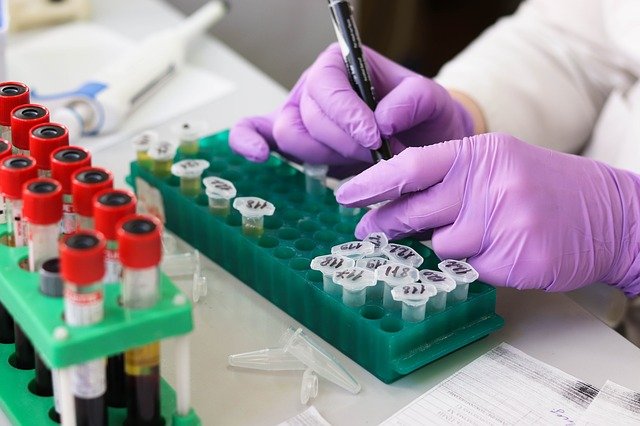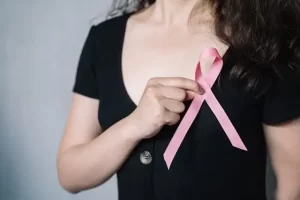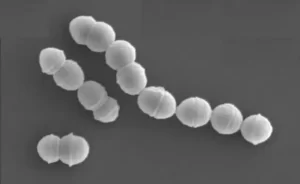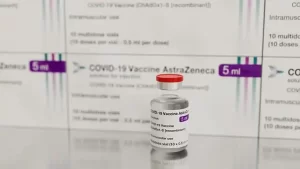The latest cancer marker can detect multiple cancers early
- Daiichi Sankyo/AstraZeneca’s Enhertu Shows Positive Results in Phase III DESTINY-Breast06 Clinical Trial
- Mn007 Molecules Offer Potential for Combating Streptococcus pyogenes Infection
- Popular Indian Spices Banned in Hong Kong Over Carcinogen Concerns
- AstraZeneca Admits for the First Time that its COVID Vaccine Has Blood Clot Side Effects
- Gut Bacteria Enzymes Offer Hope for ABO Universal Blood Transfusions
- Well-Known Japanese Medicine Exposed for 30 Years of Data Falsification
The latest cancer marker can detect multiple cancers early
- AstraZeneca Admits for the First Time that its COVID Vaccine Has Blood Clot Side Effects
- Was COVID virus leaked from the Chinese WIV lab?
- HIV Cure Research: New Study Links Viral DNA Levels to Spontaneous Control
- FDA has mandated a top-level black box warning for all marketed CAR-T therapies
- Can people with high blood pressure eat peanuts?
- What is the difference between dopamine and dobutamine?
- How long can the patient live after heart stent surgery?
The latest cancer marker can detect multiple cancers early… announced by Nagoya University
While there are about 50 types of “cancer markers” available in general hospitals in the country…
Cancer diagnosis seems to take another step forward. In September of this year, Nagoya University announced the discovery of a “cancer marker” through blood tests that has a high potential for early detection of multiple cancers.
Compared to the cancer markers used so far, it boasts higher accuracy, allowing the detection of cancer even in asymptomatic individuals. Dr. Kojiro Kanda, a member of the research team, provided detailed insights.

The term “cancer (tumor) marker” refers to substances specific to cancer that are secreted when cancer forms in the body and circulate in the body through the bloodstream. Blood tests or urine tests measure the values of cancer markers, assisting in the diagnosis of the presence and location of cancer or, in individuals already diagnosed with cancer, determining treatment effectiveness and confirming recurrence.
“This time, a protein called ‘SDF-4’ has been revealed to have a high potential for detecting multiple cancers (stomach cancer, esophageal cancer, colorectal cancer, pancreatic cancer, breast cancer, liver cancer) early. In the study, blood was collected from 80 healthy individuals and 400 gastric cancer patients to evaluate the diagnostic accuracy. The detection rate (sensitivity) for cancer patients was 89%, and the probability of diagnosing non-cancer individuals as negative (specificity) was 99%.”
Even at asymptomatic stage 1, values increase
In general hospitals in the country or those covered by insurance, there are about 50 types of cancer markers. However, in the case of conventional methods such as CEA and CA19-9 used for digestive cancers and breast cancer, the sensitivity for stomach cancer was only 13% for CEA and 17% for CA19-9, indicating unsatisfactory accuracy.
“In conventional methods, only about 5% of people show an increase in values at the stage of stomach cancer 1. Most cases show an increase only in advanced stomach cancer where symptoms appear, such as in stages 3 or 4. Additionally, there were concerns about the difficulty of determining whether a person with high blood sugar or a smoker had cancer solely based on elevated values.”
The SDF-4 discovered this time confirmed an increase in values even at the stage of stage 1 gastric cancer, similar to advanced stage 3 or 4 cancers. The chances of a complete cure for stomach cancer at stage 1 exceed 90%. Early detection is crucial to reducing the number of deaths from cancer.
Dr. Kanda also pointed out that in Japan, the number of endoscopic examinations for the stomach is very high compared to Europe and the United States.
“To confirm whether or not there is stomach cancer, a stomach camera is used, but there are some risks associated with the examination itself, such as the pain of the person undergoing the test, the high cost of the examination, and damage to the mucous membrane due to the insertion of anesthesia and instruments.”
In the case of stomach cancer, for a definitive diagnosis, tissue is collected (biopsy), and the presence of cancer is confirmed through pathological examination. If the highly sensitive SDF-4 is introduced into general medical institutions, it is expected to be used as a judgment material to determine the need for endoscopic examination based on blood test results.
Currently, the research group has applied for a domestic patent for the research results and is advancing joint research with companies for the development of a test kit for SDF-4 that can be measured in other medical institutions. However, there are several “barriers” to overcome before completion and availability for general practice.
“In this study, we conducted tests on a limited number of patients and demonstrated high accuracy. However, to put it into practical use, it is necessary to confirm and prove the diagnostic accuracy with a larger number of patients. In addition, in Japan, where medical expenses are rising, the examination for insurance coverage is very strict. We will continue to dedicate ourselves to further research and development to contribute to the early detection of patients as soon as possible.”
In hopes of increasing the number of people detected at a curable stage, early practical application is eagerly anticipated.
The latest cancer marker can detect multiple cancers early
(source:internet, reference only)
Disclaimer of medicaltrend.org
Important Note: The information provided is for informational purposes only and should not be considered as medical advice.



